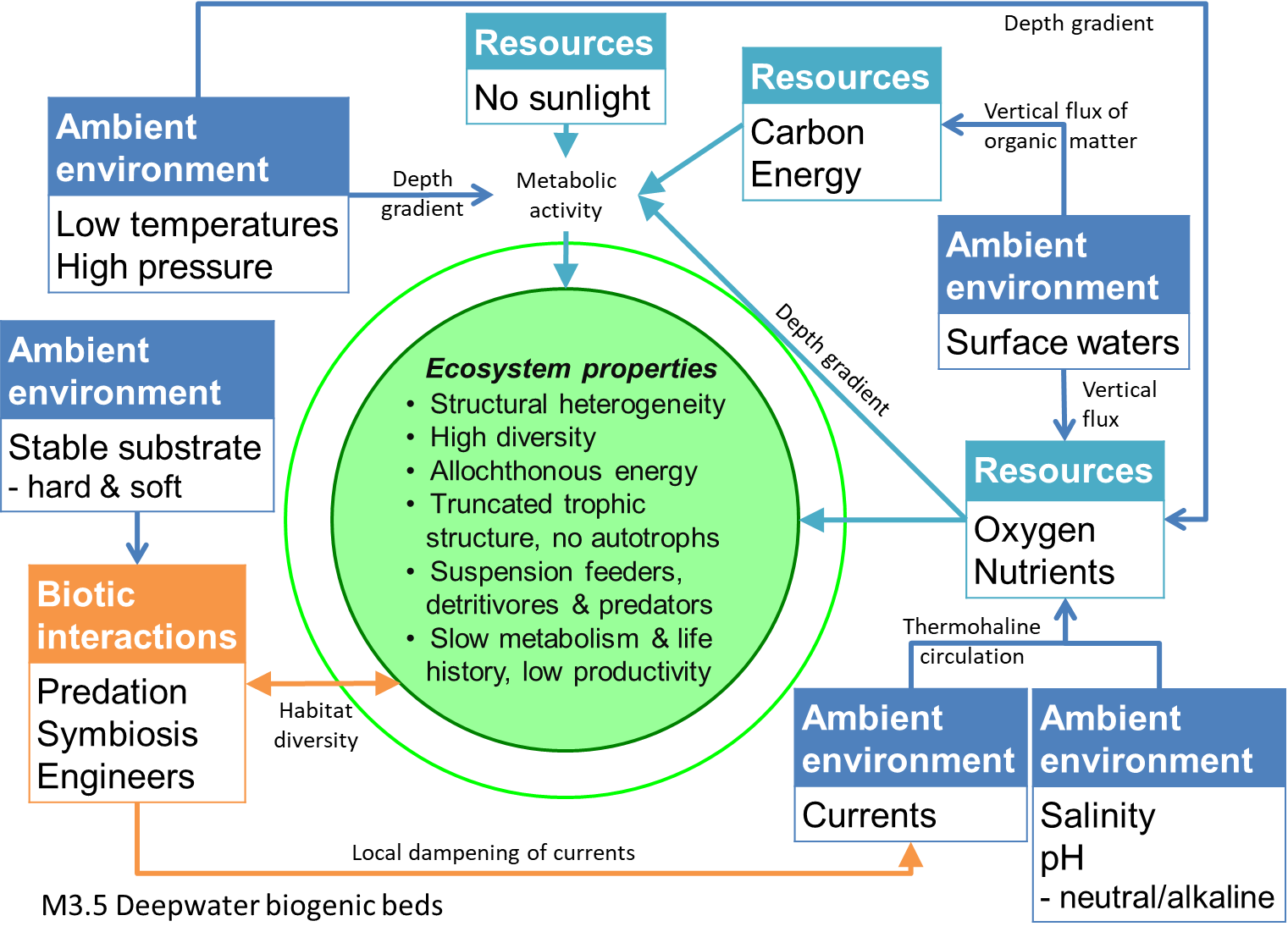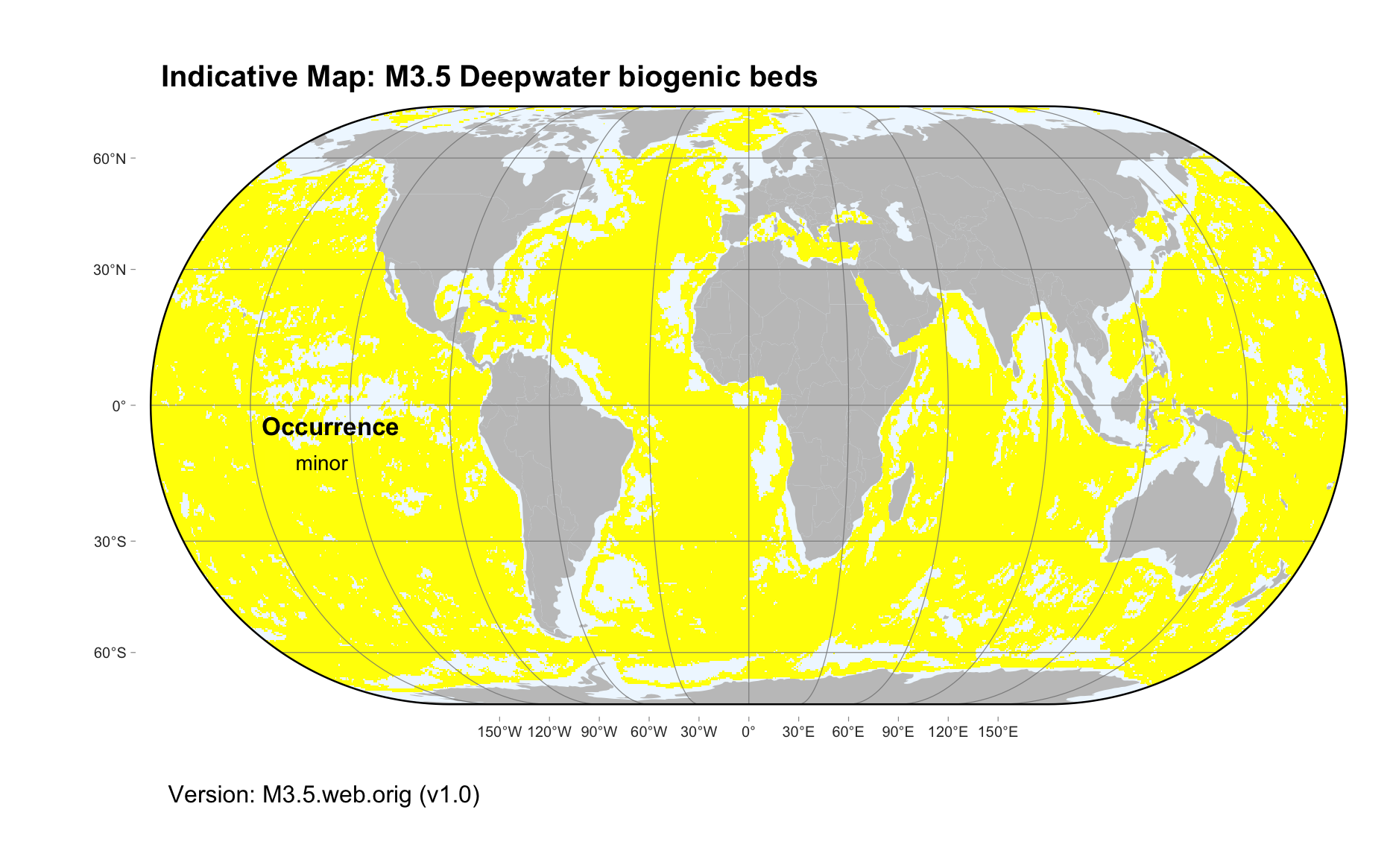Global ecosystem typology
Alternative site for the Global ecosystem typology with additional information for ecosystem profiles and indicative maps.
This site is maintained by jrfep
M3.5 Deepwater biogenic beds
Biome: M3. Deep sea floors biome
Contributors:
(texts)
Relatively complex three-dimensional structures are formed by slow-growing, filter-feeders like sponges, corals and bivalves. Without light, they rely on currents and fallout from upper ocean layers for energy and also nutrients. However, their structural complexity provides habitats for a great diversity of dependent species including symbionts, microbial biofilms and associated grazers, and filter-feeding epifauna. Mobile predators like crabs and benthic demersal fish contribute to diverse communities.
Key Features
Benthic sessile suspension feeders that crate structurally complex 3D habitat, supporting high biodiversity.
Overview of distribution
Aphotic biogenic structures from benthic fauna.
Profile versions
- v1.0 (2020-01-20): E Ramirez-Llodra; UC Fernandez-Arcaya; DA Keith
- v2.0 (2020-05-28): E Ramirez-Llodra; UC Fernandez-Arcaya; S Rossi; DA Keith
- v2.01 ():
- v2.1 (2022-04-06): E Ramirez-Llodra; UC Fernandez-Arcaya; S Rossi; DA Keith Full profile available at official site
Main references
Selected references for this functional group:
Buhl‐Mortensen L, Vanreusel A, Gooday AJ et al. (2010) Biological structures as a source of habitat heterogeneity and biodiversity on the deep ocean margins Marine Ecology 31: 21-50 DOI:10.1111/j.1439-0485.2010.00359.x
Rossi S, Bramanti L, Gori, A, Orejas C (2017) Marine Animal Forests: The ecology of benthic biodiversity Hotspots Springer, Berlin
Rossi S, Isla E, Bosch-Belmar M, Galli G, Gori A et al. (2019) Changes of energy fluxes in the marine animal forest of the Anthropocene: factors shaping the future seascape ICES Journal of Marine Sciences 76, 2008-2019
Diagrammatic assembly model

Maps
Maps are indicative of global distribution patterns are not intended to represent fine-scale patterns. The maps show areas of the world containing major (coloured red) or minor occurrences (coloured yellow) of each ecosystem functional group. See general notes on maps.
There are 2 alternative versions of the indicative map for this functional group, please compare description and sources below.
M3.5.IM.orig_v1.0
Datasets
- GSFM-2014
Map references
Harris PT, Macmillan-Lawler M, Rupp J, Baker EK (2014) Geomorphology of the oceans. Marine Geology 352: 4-24. 10.1016/j.margeo.2014.01.011
M3.5.web.orig_v1.0

Datasets
- GSFM-2014
Map references
Harris PT, Macmillan-Lawler M, Rupp J, Baker EK (2014) Geomorphology of the oceans. Marine Geology 352: 4-24. 10.1016/j.margeo.2014.01.011
Check: the Glossary / Profile structure / the public document